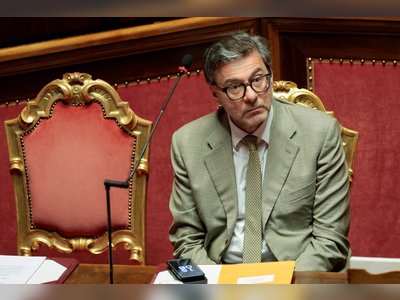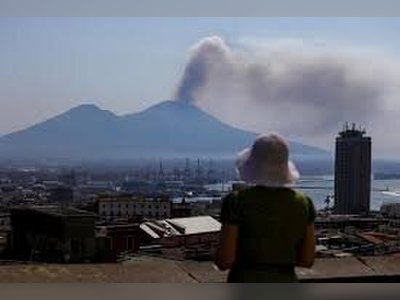Italy's Energy Crossroads: A Strategic Hub for Europe’s Future
Examining Italy’s pivotal role in securing Europe's energy landscape amidst a green transition.
As Europe grapples with the dual imperatives of energy security and a green transition, Italy stands at a critical juncture with the potential to reshape the continent's energy dynamics.
Nestled at the heart of the Mediterranean, Italy is not merely a passive transit point, but an active player in the evolving energy mosaic of Europe.
In recent years, Italy has made significant strides in diversifying its energy sources, underpinning its status as a pivotal energy hub.
Bolstering its liquefied natural gas (LNG) infrastructure, Italy has positioned itself as a strategic gateway for LNG imports from around the globe, including the politically charged energy-rich nations of North Africa and the Middle East.
These efforts align with Europe's broader goal of enhancing energy security by reducing reliance on traditional gas pipelines from Eastern Europe and Russia, a priority underscored by geopolitical tensions.
However, Italy’s ambitions extend beyond merely reinforcing its role in traditional energy markets.
The nation is at the forefront of Europe’s renewable energy transition, steadfastly advancing solar and wind projects to meet the European Union’s green energy targets by 2030.
The Italian government has launched an array of initiatives aimed at harnessing its abundant solar potential in the south, which, if scaled effectively, could see Italy serve as a renewable energy exemplar for the Mediterranean region.
Yet, this green trajectory is not without its challenges.
Italy must balance these environmental commitments with economic imperatives, particularly as the country faces the economic reverberations of the COVID-19 pandemic.
Furthermore, the success of Italy’s energy transition hinges on European-level cooperation and strategic alignment, underpinned by financial and technical support from Brussels.
Italy's path as an energy crossroads is emblematic of wider European tensions and ambitions—a blend of urgency and opportunity that demands nuanced policy navigation.
As the continent stands at the precipice of an energy revolution, Italy’s actions will have resounding implications, offering a template or cautionary tale for fellow EU members.
Whether Italy emerges as a beacon or merely a participant in Europe's energy future remains contingent on its strategic choices today.
In the broader scheme, Italy's energy crossroads is reflective of Europe's own critical choices—balancing security with sustainability, and legacy commitments with future aspirations.
How Italy navigates this intricate landscape will not only define its energy future but will also have significant ramifications for Europe at large.
The stakes, much like the opportunities, have never been greater.
Nestled at the heart of the Mediterranean, Italy is not merely a passive transit point, but an active player in the evolving energy mosaic of Europe.
In recent years, Italy has made significant strides in diversifying its energy sources, underpinning its status as a pivotal energy hub.
Bolstering its liquefied natural gas (LNG) infrastructure, Italy has positioned itself as a strategic gateway for LNG imports from around the globe, including the politically charged energy-rich nations of North Africa and the Middle East.
These efforts align with Europe's broader goal of enhancing energy security by reducing reliance on traditional gas pipelines from Eastern Europe and Russia, a priority underscored by geopolitical tensions.
However, Italy’s ambitions extend beyond merely reinforcing its role in traditional energy markets.
The nation is at the forefront of Europe’s renewable energy transition, steadfastly advancing solar and wind projects to meet the European Union’s green energy targets by 2030.
The Italian government has launched an array of initiatives aimed at harnessing its abundant solar potential in the south, which, if scaled effectively, could see Italy serve as a renewable energy exemplar for the Mediterranean region.
Yet, this green trajectory is not without its challenges.
Italy must balance these environmental commitments with economic imperatives, particularly as the country faces the economic reverberations of the COVID-19 pandemic.
Furthermore, the success of Italy’s energy transition hinges on European-level cooperation and strategic alignment, underpinned by financial and technical support from Brussels.
Italy's path as an energy crossroads is emblematic of wider European tensions and ambitions—a blend of urgency and opportunity that demands nuanced policy navigation.
As the continent stands at the precipice of an energy revolution, Italy’s actions will have resounding implications, offering a template or cautionary tale for fellow EU members.
Whether Italy emerges as a beacon or merely a participant in Europe's energy future remains contingent on its strategic choices today.
In the broader scheme, Italy's energy crossroads is reflective of Europe's own critical choices—balancing security with sustainability, and legacy commitments with future aspirations.
How Italy navigates this intricate landscape will not only define its energy future but will also have significant ramifications for Europe at large.
The stakes, much like the opportunities, have never been greater.
Translation:
Translated by AI
AI Disclaimer: An advanced artificial intelligence (AI) system generated the content of this page on its own. This innovative technology conducts extensive research from a variety of reliable sources, performs rigorous fact-checking and verification, cleans up and balances biased or manipulated content, and presents a minimal factual summary that is just enough yet essential for you to function as an informed and educated citizen. Please keep in mind, however, that this system is an evolving technology, and as a result, the article may contain accidental inaccuracies or errors. We urge you to help us improve our site by reporting any inaccuracies you find using the "Contact Us" link at the bottom of this page. Your helpful feedback helps us improve our system and deliver more precise content. When you find an article of interest here, please look for the full and extensive coverage of this topic in traditional news sources, as they are written by professional journalists that we try to support, not replace. We appreciate your understanding and assistance.











